In one of the oldest neighborhoods of Oakland, California, a short pedestrian alley called Temescal Alley has recently become the “East Bay’s Hippest Street,” according to Condé Nast Traveler magazine. Its buildings—a number of them built in the early 20th century as stables for horse-drawn trolleys—are modest. The 18 shops that open onto the alley and its neighbor, Alley 49, are local businesses, including a vintage clothing shop, an art gallery, a synthesizer store, and an apothecary. The wait to get a haircut at the barbershop can take hours. The menswear store, Standard & Strange, takes its name from a line in Jane Jacobs’s 1961 book The Death and Life of Great American Cities.
Register for the ULI Fall Meeting | Tour: Oakland: A Legacy of Opportunity
“The standard and the strange” is a good way of describing the appeal of “authenticity” in the urban landscape. In reaction to the perceived homogeneity of suburban shopping malls and mass-produced goods, as well as the rise of the craft movement and the buy-local movement, many of today’s consumers want to shop in places that have a handcrafted or bespoke feel to them. Because big-box and internet retailers have captured the low-cost end of the retail spectrum, brick-and-mortar retail stores cannot compete on price, so they need to focus on offering unique environments and experiences if they are to remain relevant.
National retailers are taking notice. Starbucks is rolling out the Starbucks Reserve Roastery and Tasting Room, the first of which opened in Seattle’s Capitol Hill neighborhood last year. It sells small-lot coffees roasted on site. The question arises: how far can authenticity go? Is it an ingredient that national real estate investment trusts (REITs) can add to their conventional shopping centers?
The typical shopping mall, built all at once by the same developer and usually designed by the same architect, offers coherence and predictability for both national retailers and consumers. Traditional main streets, however, developed incrementally over a much longer period of time, with individual property owners using different architects. In the modern age, new, authentic-feeling retail environments tend to come about either because a “lone wolf” developer creates and curates a complex of buildings over time, or retail tenants group themselves by affinity along a few blocks of a street—often sparked by one successful shop.
Fairfax Avenue in Los Angeles is an example of the organic model. A four-block stretch of Fairfax was long known mostly for businesses serving the area’s Orthodox Jewish community. In 2004, Supreme, a New York City–based streetwear shop, opened a branch on Fairfax and began attracting similar retailers, followed by hip restaurants, including a few run by celebrity chefs. Streetwear, a style of casual clothing that draws on hip-hop and skateboarding cultures, arose in reaction to the mass-produced clothing available in conventional malls. The distinct cultures of urban streetwear and the existing shopkeepers seemingly have one thing in common: the need for an open storefront facing a busy street with a common sidewalk.
In the case of Temescal Alley, local husband-and-wife landlords Sarita Waite and Raymond Lifchez, an architecture professor at the University of California, Berkeley, selected the tenants.
An older and larger version of the lone-wolf model is Fourth Street in Berkeley, California. This popular retail street started taking shape in the 1980s in a formerly industrial area. Local design/build firm Abrams/Millikan & Kent created a building design center on the street, with home furnishings, design stores, and Fourth Street Grill, a California cuisine mecca until it closed in 1993. Over decades, the development grew into a shopping corridor with about 70 shops and restaurants. Anthropologie and Apple sit alongside locally owned cafés and clothing stores.
Another lone-wolf example is what LAB Holding, a Costa Mesa, California–based development company, calls the “anti-mall.” The company’s first anti-mall, the LAB, opened in Costa Mesa in 1993 in a former night-vision goggle factory. It was aimed at attracting urban youths who were disenchanted with conventional malls. “The LAB stands for ‘little American business,’ ” says Shaheen Sadeghi, company president and founder. “Twenty-three years ago, when we started this company, we felt that the energy, the excitement, the entrepreneurship, and the sense of connection are usually generated by smaller or newer companies.”
Tenants include Urban Outfitters and vintage clothing merchant Buffalo Exchange, as well as various one-of-a-kind clothing shops. Materials from factory buildings were recycled to serve as walls and planters for the complex. An indoor/outdoor courtyard contains a living room with couches and magazine stands, and art shows, local music performances, and poetry readings are held there. With LAB Holding’s blessing, local knitters have yarnbombed planters and signs in the complex, lending it a crafted feel. LAB Holding opened a second antimall, CAMP, in 2002, with retailers targeting health and outdoors enthusiasts.
Ferry Building, San Francisco
Creating a sense of authenticity can be crucial for retail projects that, on paper, lack some of the traditional markers for commercial potential. San Francisco’s Ferry Building, for example, is now a model for market halls across the country, but before its redevelopment, it had terrible prospects from a traditional retail standpoint. Completed in 1898, the building had declined after the Bay Bridge opened in 1936 and significantly diminished ferry traffic. In the 1950s, the Great Nave—a dramatic 660-foot-long (200 m) skylit concourse on the second floor of the Ferry Building—was converted to office use, Abbot an effort that included inserting a third floor and suspending a ceiling from the nave’s arched roof trusses. The construction of the double-deck Embarcadero Freeway further eclipsed the structure.
After the freeway was demolished in the 1990s, the Port of San Francisco held a public competition to redevelop the Ferry Building into offices. Local developers Wilson Equity Office, Primus, and Wilson Meany teamed up to win the project.
“There was 200,000 square feet [19,000 sq m] of office space on the waterfront that people would invest in,” says Chris Meany, cofounder and managing partner of Wilson Meany, the Ferry Building’s current owner. “But the request for proposals said that you have to have a ground-floor use that will attract the public. In 1998, there was 100 percent agreement in the development community that retail would fail there.” No parking was available. Half the surrounding trade area consisted of water. And six traffic lanes separated the building from the rest of the city.
The winning team was the only one to propose restoring the architectural feature that made the building’s interior compelling in its ferry terminal days—the Great Nave.
“Our idea was let’s restore the building and really get to the soul of the building, which is its nave, and that will be a magnet and attract people,” Meany says. The team proposed giving the ground floor, which would become the main public area, a view to the nave by cutting two large holes in the second level’s original mosaic floor. The solution alters the original building but reveals what made it special. California’s Office of Historic Preservation and the National Park Service allowed the alteration. In considering how to create a market hall that felt authentic, the development team visited a number of examples around the world. “The successful ones were all uniquely adapted to their particular place. We said, ‘The Bay Area has a series of artisans and chefs who share a belief in sustainable agriculture. So we’re going to invite them to cohabitate,’” Meany says. The idea was to create a retail street with stalls beneath the Great Nave. The revamped Ferry Building opened in 2003 and continues to draw crowds of local residents, office workers, and tourists.
La Brea, Los Angeles
In 2008, the Los Angeles office of Madison Marquette bought a complex of 11 buildings dating to the 1930s on one block of South La Brea Avenue in Los Angeles. Although the company was not able to purchase two parcels, the 11 were enough to create a unique shopping district. Across the street, American Rag, a large, popular denim store, was already drawing customers from all over the Los Angeles Basin. It was bolstered by other, smaller streetwear and sportswear shops nearby. Madison Marquette decided to curate a mix of retail, food, and office tenants that would appeal to a similar customer base and reflect the property’s history as part of the city’s design district. Although the existing buildings were relatively nondescript, the distressed look of the architecture provided part of the authentic feel. Tom Gilmore, president and senior managing director of Madison Marquette Retail Services in Los Angeles, remembers that one day Mark Werts, owner of American Rag, crossed the street and said to him, “Don’t you dare touch the peeling paint. That’s what you’ve bought here—the peeling paint, the stained floors, the grime.” Madison Marquette upgraded the structure and facades but left the original brick walls, wood-truss ceilings, and steel beams exposed.
La Brea opened in 2011. The target market was not luxury, but it was a higher-than-average price point and had more of a focus on male, urban consumers than a standard mall would have targeted. “Underwriting was very challenging: there were no brands like Bonobos, Gant, or Aether at the time,” Gilmore says, naming three apparel companies that target young, male consumers and that opened stores in the La Brea project in 2014. “Now they are nationally known, to some extent because of this project.”
Public/Private Partnerships
Financing authenticity on the larger scale is a challenge. One successful strategy is to rely on public/private partnerships. LAB Holding’s third anti-mall, the Anaheim Packing District, opened in 2014 as the result of a public/private partnership with the city of Anaheim.
In Chicago, the city called on the University of Chicago to help revitalize the 53rd Street retail district a few blocks north of the university’s Hyde Park campus. “In the early 1900s, the street was home to hotels, residences, live theaters, fine dining, local retailers, and a strong office population,” says Jim Hennessy, associate vice president for commercial real estate operations at the university. But by 2000, the district suffered from blight. Seeing an opportunity to support economic development in the community and help attract top scholars, researchers, and students, the university started by purchasing the long-vacant historic Harper Theater in 2002.
The revitalization effort relied heavily on community input. “Through a series of community workshops that began in 2007, Hyde Park residents and business owners identified the need for more retail options and amenities along 53rd Street,” says Hennessy. “The University of Chicago and the city of Chicago combined resources to redevelop Harper Court, a mixed-use project led by Vermillion Development that became the anchor for revitalization of the entire corridor.”
Harper Court comprises office space for university employees, a Hyatt Place hotel, and 75,000 square feet (7,000 sq m) of retail space, including local retailers alongside national retailers such as Chipotle and Starbucks. The Harper Theater was restored and reopened as a neighborhood movie theater in 2013. “Its movies now play to sell-out crowds,” Hennessy says.
The revitalization has been successful because it relates to the area’s history and creates opportunities. A multitenant building at 1500 East 53rd Street serves as an incubator for new local retailers. “Retailers typically stay for a period of six months, with the option to stay long term if the neighborhood proves to be a good fit,” says Hennessy. In all, 30 retailers have been added to 53rd Street in the past three years. “Two-thirds of these new retailers are local Chicago-based companies.”
Although many national retailers still prefer spots in conventional shopping malls, a number of smaller ones look for authentic-feeling locations in hip urban settings. When Jack Spade, a New York City–based company, was founded in 1993 as the men’s line for fashion design house Kate Spade, the company had great flexibility in terms of how it could promote the brand. It opened about a dozen brick-and-mortar stores in hip urban locations across the globe, in major cities like London and Tokyo, and in smaller ones like New Canaan, Connecticut. Although the physical stores might not make a lot of profit, they help promote and position the brand.
“We were interested in seeing models of very small stores—what their profitability could be and what their impact on the community could be,” says Cuan Hanly, former vice president and brand and creative director for Jack Spade, who now is chief executive officer of the fine leather goods shop Mulholland on Berkeley’s Fourth Street. “We always wanted our stores to feel engaged in the community, to have that owner/occupier feel about them. We tried to customize each retail space.”
Choosing where to open Jack Spade stores ultimately depended on instinct, Hanly says. “Our store on Abbot Kinney Boulevard in Venice, California, opened in 2010, before the big expansion of retail on that street,” he says. “I remember walking the street and just feeling like it was going to be good. Obviously, you look at traffic levels; you look at cotenancies; you try and get some intelligence on who might be moving into the area, but generally it was an instinctual feeling. The architecture of the store was very important as well—that it felt individual, it felt different. The building we found is like a little house.”
Such preferences—for a “little house” feel, or for older buildings with scarred bricks or peeling paint, or for historic theaters returned to life—suggest a challenge for owners of suburban shopping malls seeking to call on the magic of authenticity. Authenticity is difficult to roll out on a large scale because it arises from a relationship to the unique qualities of the place it inhabits, whereas the anchored shopping mall was created to be a place apart. And obtaining financing for a mall requires relying on large national tenants.
Catellus Development, based in Oakland, California, is developing Mueller Town Center, a mixed-use development in Austin, Texas. The developer has teamed with the city to include a high number of local retailers in the town center. Despite the challenges of building a pro forma on limited national credit accounts, the city and developer realized that the success of the project would hinge on local food, local fashion, and local entertainment.
However, REITs are aiming to incorporate aspects of authenticity, with a particular focus on food and events, which can be tailored to the local community’s interests and can offer the experiential qualities that online retailers cannot.
A number of malls are turning to food trucks to bring life to their parking lots. Pacific View Mall in Ventura, California, for example, holds Food Truck Friday every third Friday of the month, with different trucks serving up steamed buns, barbecue, and panini. The Domain Mall in Austin recently opened its Great Lawn, which is covered by a cable structure illuminated with light-emitting diodes. Domain hosts not only food trucks, but also entertainment, fitness classes, and a farmers market.
Chicago-based REIT General Growth Properties has formed a new division called Eat/Drink that is working to roll out market halls in its properties and that is offering healthier fare at higher prices than typical food courts. Although consumers still expect a degree of predictability from shopping malls—for instance, they may want to be sure that Panda Express is there each time they visit—they also love the element of surprise. Mingling the two—the standard and the strange—may be the key to success.
SEAN SLATER is a principal at ELS Architecture and Urban Design in Berkeley, California.

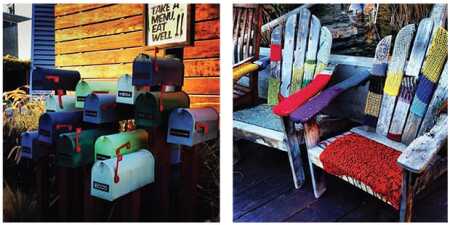
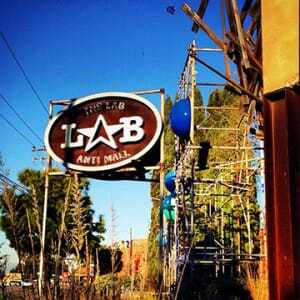

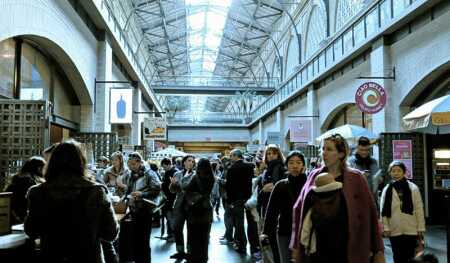
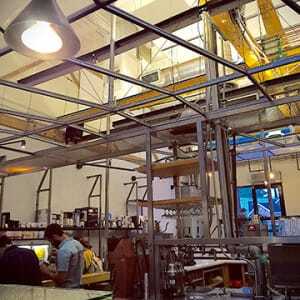

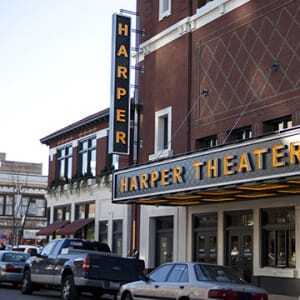

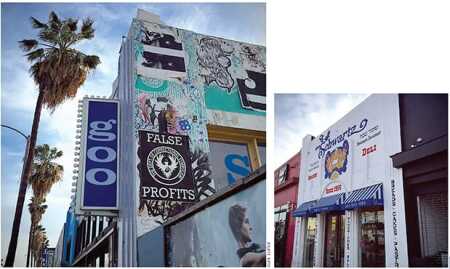
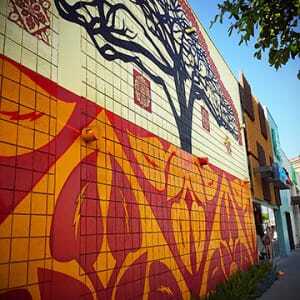
![Western Plaza Improvements [1].jpg](https://cdn-ul.uli.org/dims4/default/15205ec/2147483647/strip/true/crop/1919x1078+0+0/resize/500x281!/quality/90/?url=https%3A%2F%2Fk2-prod-uli.s3.us-east-1.amazonaws.com%2Fbrightspot%2Fb4%2Ffa%2F5da7da1e442091ea01b5d8724354%2Fwestern-plaza-improvements-1.jpg)


